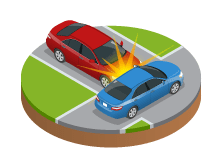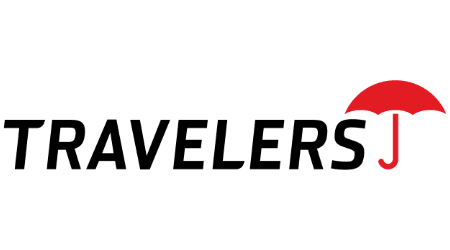Get the cheapest quotes for your car
Compare providers in your area.
Your information is secure
Compare providers in your area.
Your information is secure
Nevada drivers pay an average of $1,386.22 per year for car insurance according to the National Association of Insurance Commissioners (NAIC), that’s about $115.52 per month. Nevada drivers pay about 17% more than the countrywide national average of $1,189.64.
The NAIC takes into account all car insurance policies within the state such as drivers who select only state minimum coverage, as well as policies that include various levels of comprehensive and collision coverage. Because car insurance rates are influenced by personal factors, you could find yourself paying significantly less.

In at-fault states, the driver who caused the accident pays for damages.
Drivers in Nevada are required to carry a minimum amount of liability coverage to legally drive. You may see it written as 25/50/20, but we’ll break down what that means.

Nevada requires $25,000 in bodily injury liability per person and $50,000 of bodily injury per accident to legally drive. That’s right in line with what most states across the US require for this coverage.
This means $25,000 is the most your insurer will pay for a single person injured by you in an at-fault accident. And $50,000 is the maximum amount your insurer will pay if there is more than one person injured by you in an at-fault accident. Any costs outside of your bodily injury limit are required to come out of your pocket.

Nevada requires drivers to carry $20,000 of property damage liability to legally drive. This is on the higher end of required property damage limits across the US, though not as common as the $25,000 limit that many states require.
This means $20,000 is the maximum amount your car insurance company will pay towards damages you cause to another person’s car or property, such as repairs to a car, fence or building. You’ll have to pay out of pocket for any costs beyond your property damage liability limit.
These state-mandated requirements are the lowest amount of coverage you need to legally drive in Nevada, but may fall short if you’re in a major accident. To avoid high out-of-pocket costs after an accident, consider raising your liability limits by balancing coverage, your budget and what you can afford to pay out of pocket for certain damage.
In Nevada, drivers under age 25 can expect to pay above $200 per month. USAA and Progressive ring in as the lowest rates for young drivers, based on Savvy’s sample quotes.
For other ages, USAA’s, Geico’s and Progressive’s rates stand neck and neck. You may want a quote from all three companies to find the best value for you.
| Age | Allstate | Progressive | Geico | USAA |
|---|---|---|---|---|
| 16-24 | $247.85 | $236.46 | $269.76 | $229.64 |
| 25-34 | $203.87 | $173.00 | $173.42 | $183.15 |
| 35-44 | $207.98 | $163.21 | $159.81 | $159.77 |
| 45-54 | $189.75 | $147.16 | $149.42 | $132.27 |
Prices look significantly different between men and women – as much as $40 different based on the company. Men may go with Progressive to find the best value for them, while women may want a quote from Geico.
| Company | Allstate | Progressive | Geico | USAA |
|---|---|---|---|---|
| Men | $222.61 | $155.66 | $185.68 | $175.61 |
| Women | $183.21 | $180.86 | $160.64 | $191.65 |
We found Progressive to offer the closest value to Nevada’s average across the state. We base that information off of sample car insurance quotes from Savvy.
You also can lower your costs further with Progressive by keeping a claim-free record or joining Snapshot. Snapshot is a program that tracks your driving and sets a discount if you prove that you’re a safe driver.
| Company | Allstate | Progressive | Geico | USAA |
|---|---|---|---|---|
| Rate | $202.91 | $167.11 | $174.12 | $182.48 |
In Nevada, the best car insurance companies aren’t always the first brands that come to mind. You have the option to go with brand-name companies or lesser-known choices with solid coverage, discounts and customer service ratings.
We vetted these companies by considering their coverage as well as ratings from J.D. Power, Better Business Bureau and the National Association of Insurance Commissioners.

Travelers
Finder score
Travelers offers all the coverage you'd expect from an established brand, including extras like rideshare and gap coverage. Its app lets you access your ID card, file a claim, contact or even sign insurance documents. Or you can reach out to your local agent if you prefer more personal interactions.
Travelers brings top-notch service and nearly 170 years of experience to the table when it lines up next to other major insurance brands. It's the tenth-largest auto insurance company in the US, showing that customers trust it with their insurance needs.
| Telematics | IntelliDrive |
|---|---|
| Gap insurance | Yes |
| Telematics | IntelliDrive |
|---|---|
| Gap insurance | Yes |
American Family
Finder score
American Family may not be the first brand you think about for car insurance, but you'll want a quote if you live in the Southwest. The company ranks at the top of J.D. Power's annual auto insurance study. Perhaps one reason for its high customer satisfaction is that you get one-on-one attention through local agents.
You can keep all the car insurance coverage you're used to. Plus, American Family offers options like gap, rideshare coverage and SR-22 form filing. Finally, you get a company with nearly 70 years of industry experience. American Family is the ninth-largest US auto insurance company, bringing strong finances and experience to support your claims.
Nationwide
Finder score
If you don't drive much, you could save by paying for car insurance per mile with SmartMiles. SmartMiles is one of the only pay-per-mile policies on the market, and it's offered by an experienced brand with strong finances to back your claims.
With SmartMiles, you'll pay a flat rate per month plus a few pennies for every mile you drive. For example, you could pay $95 per month if you drive around 500 miles a month. That adds up to $40 in monthly savings over a traditional policy, according to Nationwide's website.
| Telematics | Yes |
|---|---|
| Gap insurance | Yes |
| Telematics | Yes |
|---|---|
| Gap insurance | Yes |
Geico
Finder score
When you're looking to save money on car insurance, Geico probably comes to mind. The commercials are true — many drivers can save big, especially when insuring multiple vehicles or cars endowed with many safety features.
Another much-loved feature: Geico's user-friendly app. You can access your ID card, file a claim, upload photos of your car's damage or text an agent for answers to your questions. The app also connects with Carfax to remind you about maintenance you need to do for your vehicle.
| Telematics | DriveEasy |
|---|---|
| Gap insurance | No |
| Telematics | DriveEasy |
|---|---|
| Gap insurance | No |
Factors are characteristics specific to you that car insurance companies use to set how much you’ll pay for car insurance. The less risky each of your factors is, the less you pay. And the riskier you are, the more you’ll pay. We’ll break down Nevada’s rating factors to keep in mind.
| Factor | How it affects your rates |
|---|---|
Age | How old you are is a top factor in determining your car insurance rates. With each passing year, you earn more experience on the road. More experience can equal cheaper rates. Teen drivers pay the most, but rates begin to level off around your 20s with drivers over 50 paying the least. |
Gender | Nevada takes gender into account when determining your rates. On average, men in Nevada pay less for car insurance than women. The average annual premium across all age categories for men is $1,520 while women pay an average of $1,601. |
Location | Where you live affects your rates, including where you park your car. High theft rates, high traffic and a high number of uninsured drivers could mean higher rates. When it comes to vehicle theft, Nevada is higher than the national average. For every 100,000 inhabitants, approximately 336.4 vehicles were stolen, according to Statista. The national average across the US is 246 cars for every 100,000 inhabitants. As for uninsured drivers, 10.4% of Nevadans on the road are uninsured. That ranks the state 32nd out of 50 states for uninsured drivers, according to Insurance Information Institute. |
Driving Record | The better your record, the lower your premium. If you’re in an at-fault accident you could see rates increases from 20% to 50%. A DUI in Nevada can increase your rate by an average of 46%. These types of violations typically stay on your record for about five years. Nevada drivers with a clean driving record pay approximately $1,802 annually while Nevada drivers with an at-fault accident pay approximately $2,403 annually. |
Vehicle and mileage | Your car’s make, model and trim directly affect how much you’ll pay for car insurance. Things like its cost, safety ratings, the likelihood of theft and sportiness all help insurers determine its cost to insure. Safer and cheaper vehicles score the lowest rates, with luxury vehicles with higher repair costs resulting in higher premiums. And, the more you’re on the road, the more at-risk you are to get in an accident, which means higher premiums. According to the Bureau of Transportation, Nevadans drive around 25.5 miles per day, which is under the national average of 36.1 miles per day. |
Credit score | Your credit score is included in your credit-based insurance score which insurers use to help calculate rates. According to the Insurance Information Institute, there is a strong correlation between your insurance score and claims filings. A good credit-based insurance score could mean lower rates. Nevada insurers charge the highest coverage rates for drivers with poor credit histories. Drivers with good credit scores could see an annual insurance rate of about $1,487. These rates rise to about $1,865 with a fair credit score and approximately $3,873 for those with poor credit. |
Coverage | The more coverage you get and the higher limits you choose, the more protection you’ll have and the more you’ll pay in monthly premiums. If you opt for full coverage car insurance that includes comprehensive and collision, the amount of your deductible weighs into your costs too. Higher deductibles mean lower monthly premiums. Low coverage costs in Nevada average to about $722 yearly, whereas high coverage can be anywhere around $1,830 on average. |
An SR-22 is a certificate that your car insurance company files with the Nevada Department of Motor Vehicles (DMV) to let them know that you have the insurance coverage required to get behind the wheel. You’ll need to keep the SR-22 requirement for three years after reinstating your license.
You might need an SR-22 in Nevada if you have a DUI, lost your license or have too many violation points on your driving record.
The DMV won’t notify you when you can remove the SR-22 filing from your insurance. You’ll need to keep track of the date yourself so that you don’t overpay for car insurance. Insurance companies consider drivers needing an SR-22 a high risk, typically raising premiums.
The purpose of your car insurance is to help you recover financially after a car accident. While Nevada requires liability coverage, you need extra protection to cover other kinds of damage, such as:
Because Nevada requires low limits of 25/50/20 for liability coverage, think about raising those limits on your policy. Higher limits make sure that all the damage you cause is covered by insurance, including legal costs if someone takes you to court. Talk about how much liability coverage you need with your insurance agent or financial advisor.
If you’re at fault for an accident, liability coverage doesn’t pay for your car damage — it pays for damage to someone else’s property. You need collision coverage if you want your insurance to cover your car’s damage.
In Nevada, the average cost of collision coverage is about $30 per month, according to the NAIC auto insurance database. Let’s say that you get in an accident causing $1,500 in damage to your car.
If you opted out of collision coverage and saved your monthly premium, it would take you over four years to recover from this accident. Rather than saving for years on end, you can get the same protection by buying this coverage.
Consider collision coverage if . . .
Comprehensive coverage helps with any incidents other than colliding with a car. Those incidents include theft, vandalism, a tree hitting your car, weather damage or objects cracking your windshield. This coverage is especially important in Nevada where you’re 37% more likely to get your car stolen than drivers nationwide, based on Statista’s theft numbers.
Consider this coverage if . . .
While Nevada doesn’t have the highest uninsured driver rate, you still want to protect yourself from major financial strain if an uninsured driver hits you. Think about adding uninsured or underinsured motorist coverage to help you recover.
Consider this coverage if . . .
We’ve pulled the top 10 companies by market share that offer coverage in Nevada according to S&P Global. Compare top companies by three major rating agencies along with our overall score.
| Provider | BBB Rating | JD Power Rating | NAIC complaint ratio | National market share % | Finder score | Go to site |
|---|---|---|---|---|---|---|
State Farm | A+ | 847/1000 | 1.93 | 16.2 | ★★★★★ 4/5 | |
Geico | A+ | 832/1000 | 1.42 | 13.6 | ★★★★★ 4/5 | |
Progressive | A+ | 830/1000 | 1.05 | 13.3 | ★★★★★ 4/5 | Get Quotes |
Allstate | A+ | 827/1000 | 2.71 | 10.4 | ★★★★★ 4/5 | |
USAA | A+ | 884/1000 | 1.9 | 6.3 | ★★★★★ 4/5 | |
Farmers | A- | 820/1000 | 1.64 | 4.9 | ★★★★★ 4/5 | |
Liberty Mutual | A+ | 827/1000 | 2.2 | 4.7 | ★★★★★ 4/5 | Get Quotes |
Nationwide | A+ | 814/1000 | 2.08 | 2.3 | ★★★★★ 4/5 | |
American Family | A+ | 815/1000 | 1.35 | 2.1 | ★★★★★ 4/5 | |
Travelers | A+ | 820/1000 | 3.28 | 2 | ★★★★★ 4/5 |
Of Nevada’s largest cities, Sparks has the cheapest car insurance rates and Las Vegas has the most expensive rates. Las Vegas drivers could face rates eight times more than Sparks drivers.
| Company | Annual car insurance rate |
|---|---|
| Allstate | $2032 |
| American Family | $7618 |
| Progressive | $1674 |
| AAA | $2038 |
| Mercury | $3648 |
| Company | Annual car insurance rate |
|---|---|
| Allstate | $1618 |
| American Family | $6368 |
| Progressive | $1581 |
| AAA | $1735 |
| Mercury | $3433 |
| Company | Annual car insurance rate |
|---|---|
| Allstate | $1696 |
| American Family | $5735 |
| Progressive | $1456 |
| AAA | $1804 |
| Mercury | $3298 |
| Company | Annual car insurance rate |
|---|---|
| Allstate | $916 |
| American Family | $3139 |
| Progressive | $1053 |
| AAA | $1154 |
| Mercury | $2188 |
| Company | Annual car insurance rate |
|---|---|
| Allstate | $869 |
| American Family | $3139 |
| Progressive | $916 |
| AAA | $1069 |
| Mercury | $1987 |
Looking for some ways to save money on your auto insurance in Nevada? No matter what state you’re in, you can follow general tips to lower your premiums and get a better value out of your coverage.
Nevada is an at-fault state, which means that the driver who causes the car accident pays for the damage. Your insurance company and legal authorities will figure out who’s at fault, based on the circumstances.
However, Nevada also considers whether both drivers are partially at fault under its modified comparative fault law, according to the legal website Nolo. Under this law, drivers can get reimbursed for their damage as long as they don’t have a higher percentage of fault than other drivers.
For example, if you’re 80% at fault for an accident, your insurance will pay 80% of the other driver’s damages. However, since your level of fault is higher than the other driver’s, that driver isn’t required to pay for your damages.
Car insurance is both legally required and usually the best way to protect yourself and your vehicle if an accident ever occurs. Research your insurance options to make sure that you’re receiving the coverage that you need — and that your state requires.
A review of CashUSA, a loan connection service that may match you with lenders offering loans up to $10,000.
Explore different ways you could earn money playing games with GPT apps, Twitch streaming, esports competitions, and trading cards.
Compare highly rated and legit survey sites for your next side hustle, how to maximize your survey earnings, and how to avoid scams.
Learn how to become user tester, how much you can earn, top platforms for user testing, and how to avoid scams.
Learn how to earn money through trusted online surveys, including top platforms, practical tips, and some red flags to watch out for.
Earning extra cash can be as simple as sharing your thoughts. In this guide, we’ll walk you through some of the most trusted survey sites and show you how to get started right away.
Cash Advance loans by amount from $100 all the way up to $1,000 USD.
Bonds, treasury securities, blue chip stocks, ETFs, REITs, CDs and annuities are some of the best investments for retirees.
GoHenry is now Acorns Early. If you’re looking for a GoHenry alternative, try Greenlight, Step, Current, Modak Makers or Chase First.
Top apps like Self that build credit include Kikoff, Grow Credit, Chime Secured Credit Builder Card, Credit Strong and Cleo.